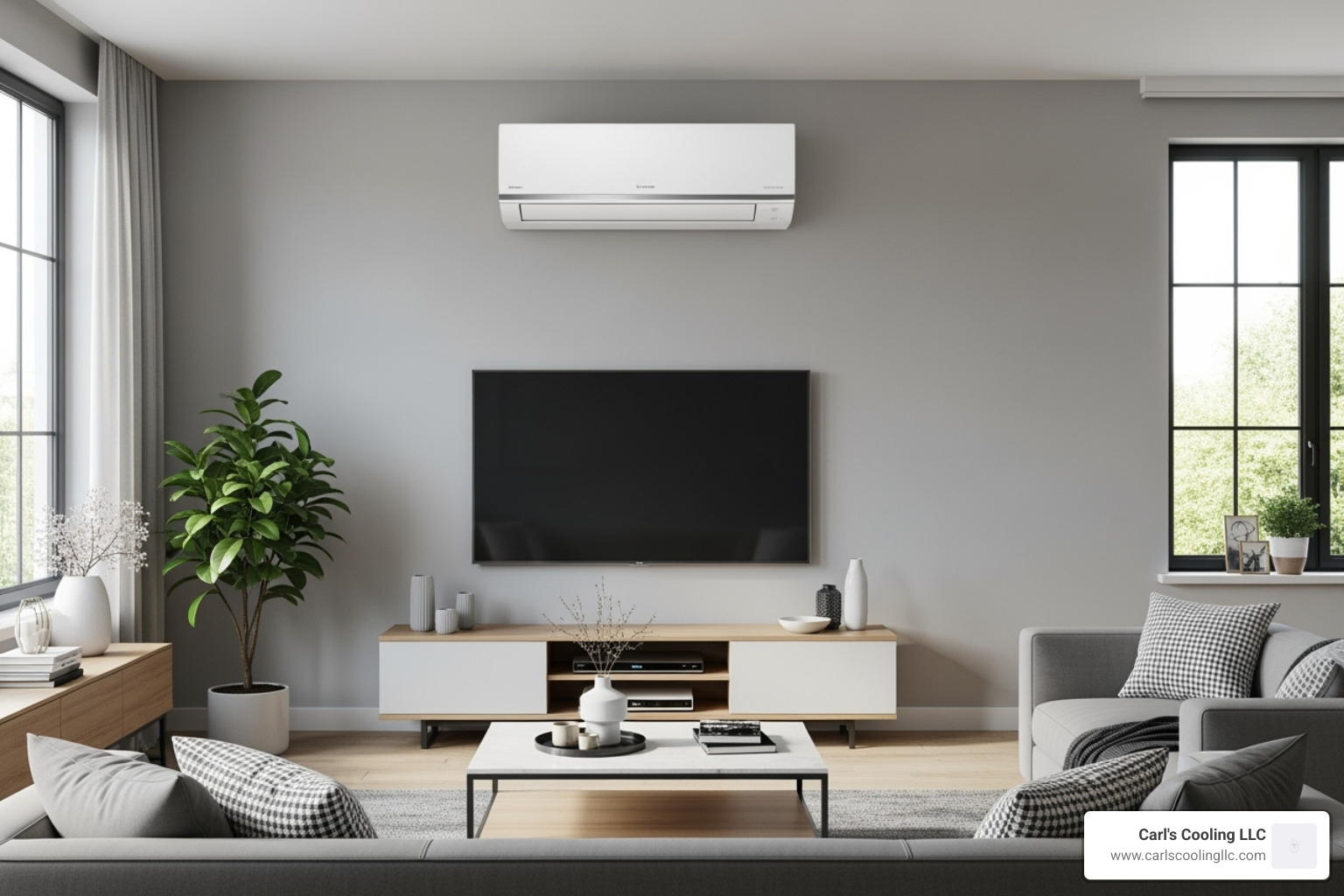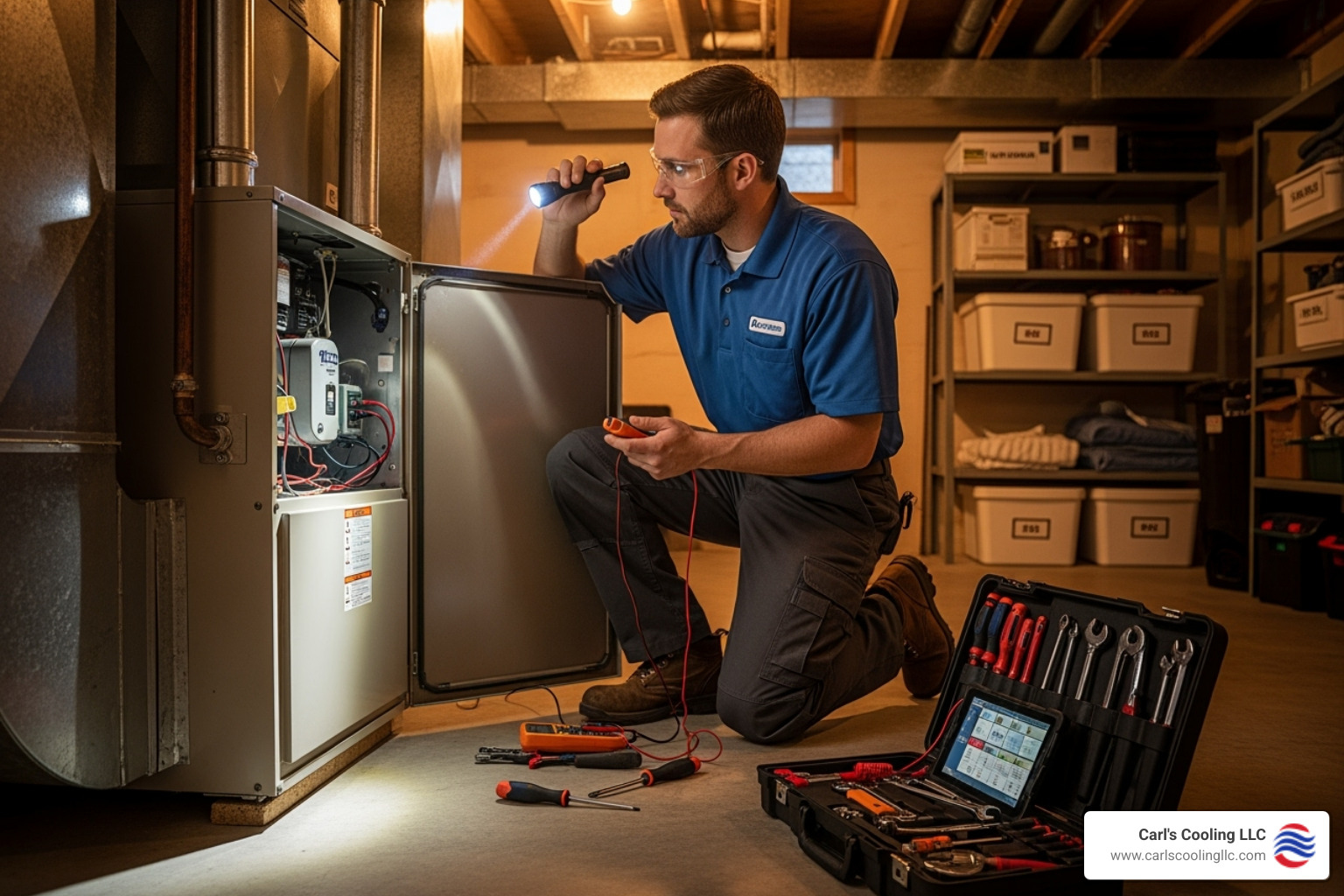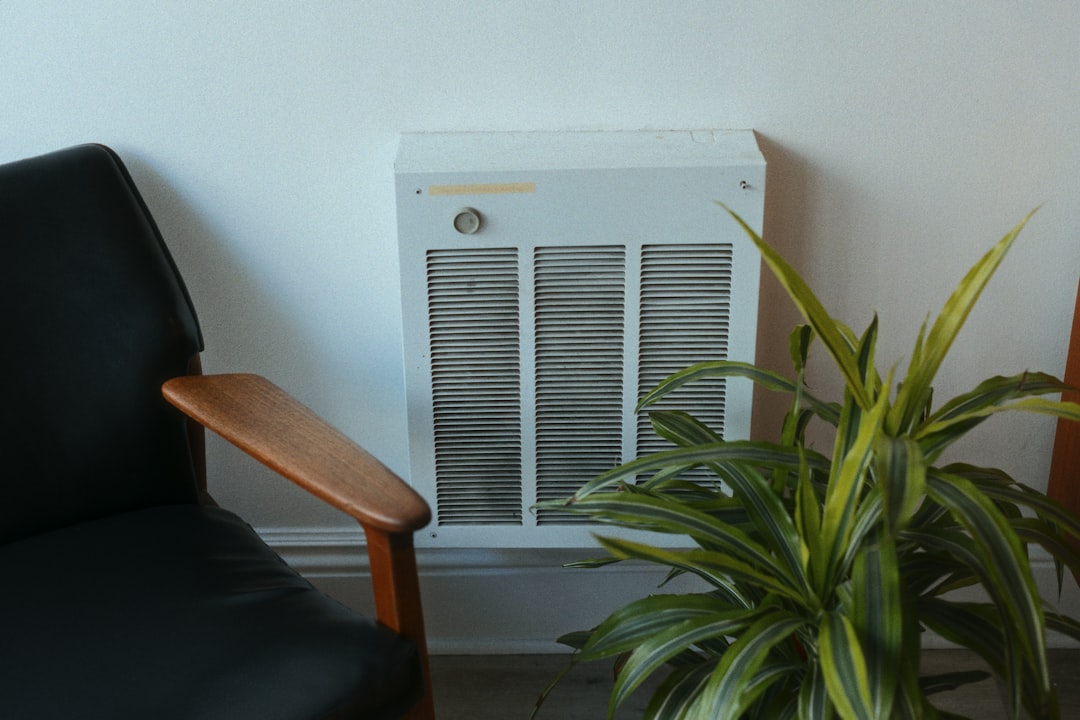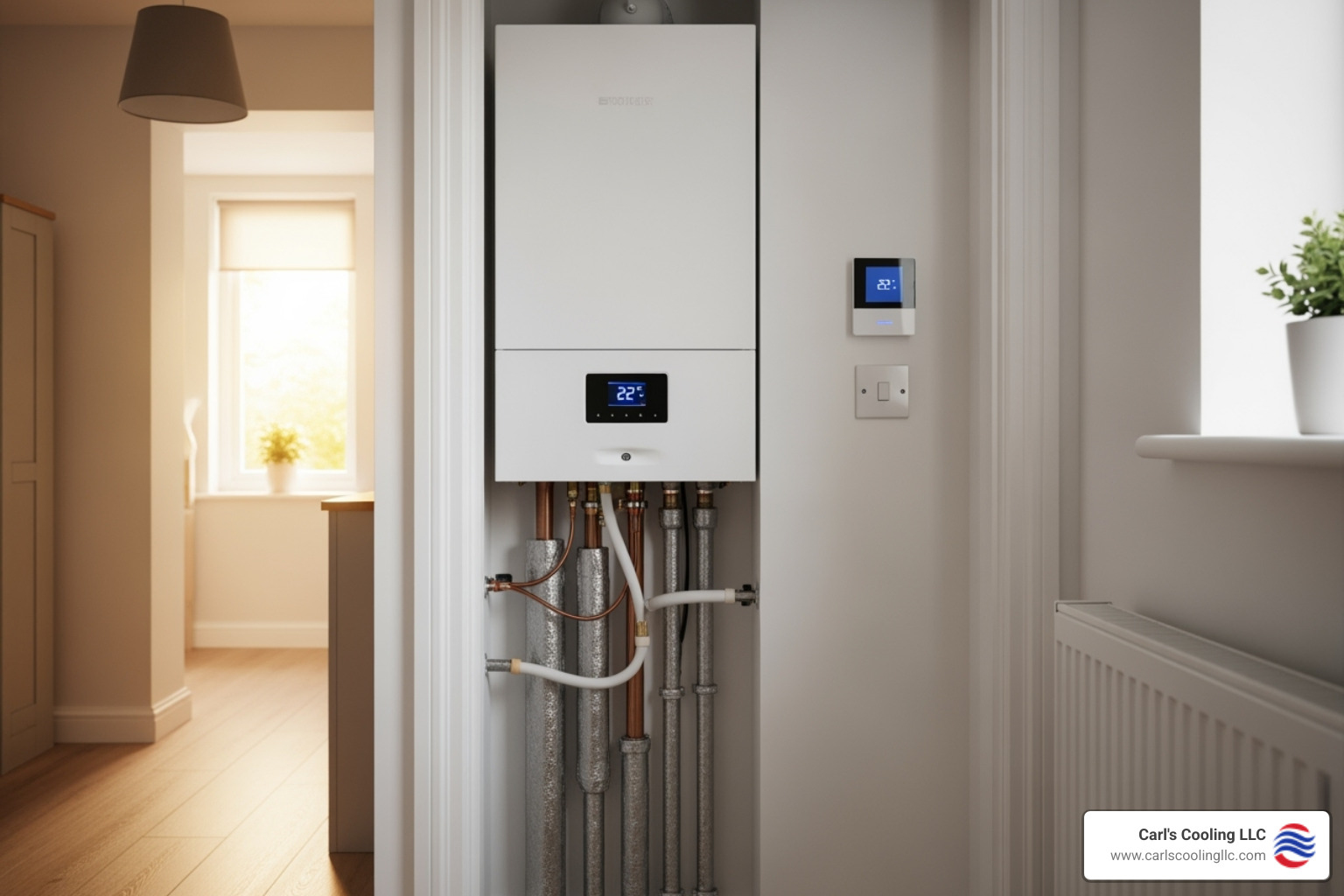Why Ductless AC Installation is the Smart Cooling Solution
Ductless AC installation offers a flexible, duct-free way to cool your home. These systems connect an outdoor unit to one or more indoor units via a small conduit, making them perfect for older homes, room additions, or anywhere you want zone-specific comfort.
Quick Installation Overview:
- Mount the indoor unit on your wall, ceiling, or floor
- Drill a small hole (about 3 inches) through the exterior wall
- Install the outdoor unit on a stable surface outside
- Connect refrigerant lines and electrical wiring through the wall hole
- Test the system and enjoy cool, comfortable air
The beauty of ductless systems lies in their simplicity. Unlike central air's extensive ductwork, mini-splits only need a small wall opening to connect the indoor and outdoor components. This means less disruption to your home and faster installation - often completed in just one day.
Duct losses can waste over 30% of energy in traditional air conditioning systems. By eliminating ducts, these systems deliver conditioned air directly where you need it, making them up to 30% more efficient than conventional central air.
Whether you're cooling a single room or multiple zones, understanding the ductless AC installation process helps you make informed decisions about your cooling needs.
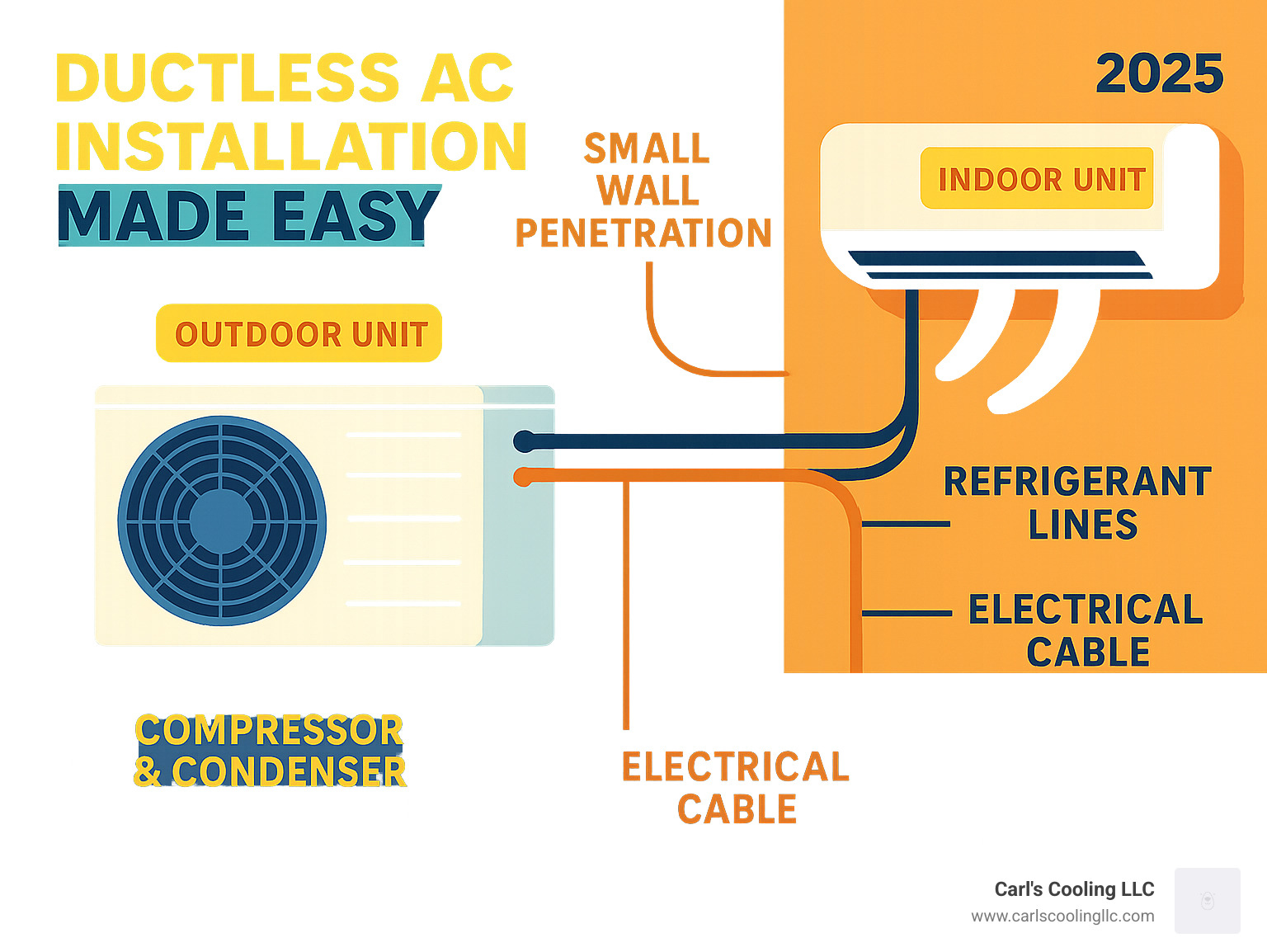
Understanding Ductless Mini-Splits Before You Start
A ductless mini-split is a streamlined version of central AC. It delivers cool air directly, avoiding the need for extensive ductwork. The system has two main parts: an outdoor unit (compressor and condenser) and one or more indoor units. They connect through a small conduit containing refrigerant lines, wiring, and a condensate drain.
Refrigerant absorbs indoor heat, releases it outside, and cycles back to cool your space. It's a dedicated cooling system for each zone in your home.
Ductless systems avoid energy losses associated with ductwork, which can be a game-changer for your energy bills and comfort levels.
The Pros: Why Choose a Ductless System?
The popularity of ductless AC installation isn't just a trend - these systems solve real problems for homeowners.
Zoned comfort is a major benefit. Everyone can set their own temperature. Cool only the rooms you're using, saving energy.
No ductwork needed makes them perfect for older homes, additions, or garage conversions where adding ducts would be costly and difficult.
Quiet operation is a key feature. The noisy compressor is outside, so indoor units run almost silently, unlike loud window units.
Installation simplicity means less disruption. It requires only a small hole in an exterior wall, avoiding major construction.
Energy efficiency is a core advantage. By eliminating ducts, which can lose up to 30% of energy, mini-splits deliver air directly. Inverter technology also adjusts compressor speed for optimal efficiency.
Better air quality is another plus. Advanced, multi-stage filtration systems capture allergens, odors, and other particles.
The Cons: Potential Drawbacks to Consider
Every cooling solution has trade-offs, and being honest about them helps you make the best choice.
Higher upfront costs are a factor compared to window units or central AC (if ducts exist). However, it's an investment that pays off in energy savings.
Visible indoor units are a consideration. While sleek and modern, they are more noticeable than central air vents.
Regular maintenance is required. You'll need to clean filters monthly to maintain efficiency and air quality.
Professional installation requirements are crucial. Handling refrigerant requires EPA certification, and electrical work needs an expert. Skipping professional help can be dangerous and may void your warranty.
Planning Your Project: Sizing, Zoning, and Unit Types
Planning your ductless AC installation is key to saving time and money. It's about finding the right fit for your home. Ductless systems are flexible, with solutions for any space. Understanding your needs and options is the first step.
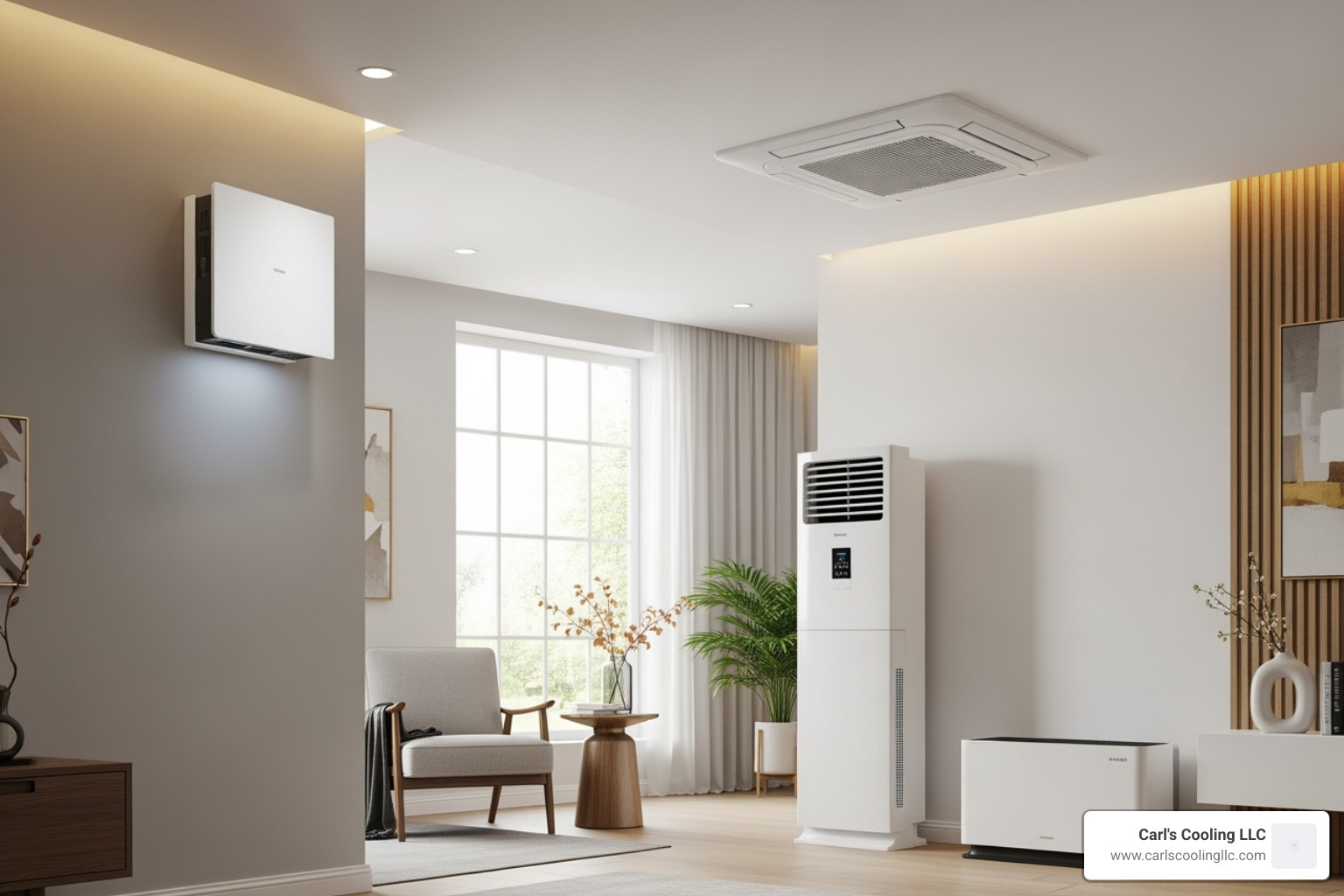
How to Choose the Right Size (BTU)
Proper sizing is crucial. A unit that's too small won't cool effectively, while one that's too large will cycle inefficiently, wasting energy and causing premature wear. Cooling power is measured in BTUs (British Thermal Units). More BTUs mean more cooling power.
Several factors determine the right size:
- Square footage: The primary factor, but not the only one.
- Ceiling height: Taller ceilings mean more air volume to cool.
- Insulation: Poor insulation requires more cooling power.
- Climate and sun exposure: Hot climates and sun-drenched rooms need more BTUs.
- Internal heat sources: Kitchens, home offices, and other heat-generating areas increase the cooling load.
While online calculators offer estimates, a professional load calculation is the best way to ensure accurate sizing. This comprehensive assessment considers all factors to determine your exact needs.
Selecting Your Indoor Units
Now for the fun part – choosing your indoor units! The best choice depends on your room's layout, your budget, and your aesthetic preferences.
Wall-mounted units are the most common and budget-friendly option. They are mounted high on a wall and offer excellent airflow for most rooms.
Ceiling cassette units fit flush into the ceiling, leaving only a grille visible. They provide even, four-way air distribution, ideal for open-plan spaces.
Floor-mounted units are installed low on a wall, making them great for rooms with limited upper wall space or sloped ceilings. They are also effective for heating.
Concealed ducted units are hidden in a ceiling or soffit and use short ducts to deliver air through traditional grilles, offering an invisible solution.
Your Step-by-Step Guide to Ductless AC Installation
Understanding the ductless AC installation process helps you make informed decisions, whether you're hiring a pro or considering a DIY approach for some steps.
Key Considerations for Your Ductless AC Installation
Before installation begins, some crucial planning is needed:
- Choosing Locations:
- Indoor Unit Placement: Place high on an interior wall, away from direct sun and with clear space around it for airflow. Avoid placement near fluorescent lights.
- Outdoor Unit Placement: Install on a stable, flat surface (like a concrete pad) with good ventilation, away from bushes and high-traffic areas. A shaded location is ideal.
- Wall Penetration: A small hole (about 3 inches) is drilled through the exterior wall for the lines connecting the indoor and outdoor units.
- Power Source: A dedicated circuit is required, which should be installed by a licensed electrician.
The Installation Process: From Box to Cool Air
Here's a general overview of the ductless AC installation process:
- Mount the Indoor Unit: Secure the mounting plate to an interior wall, ensuring it's level and attached to studs for stability.
- Drill the Conduit Hole: Drill a 3-inch hole from the inside out, angled slightly downward for drainage.
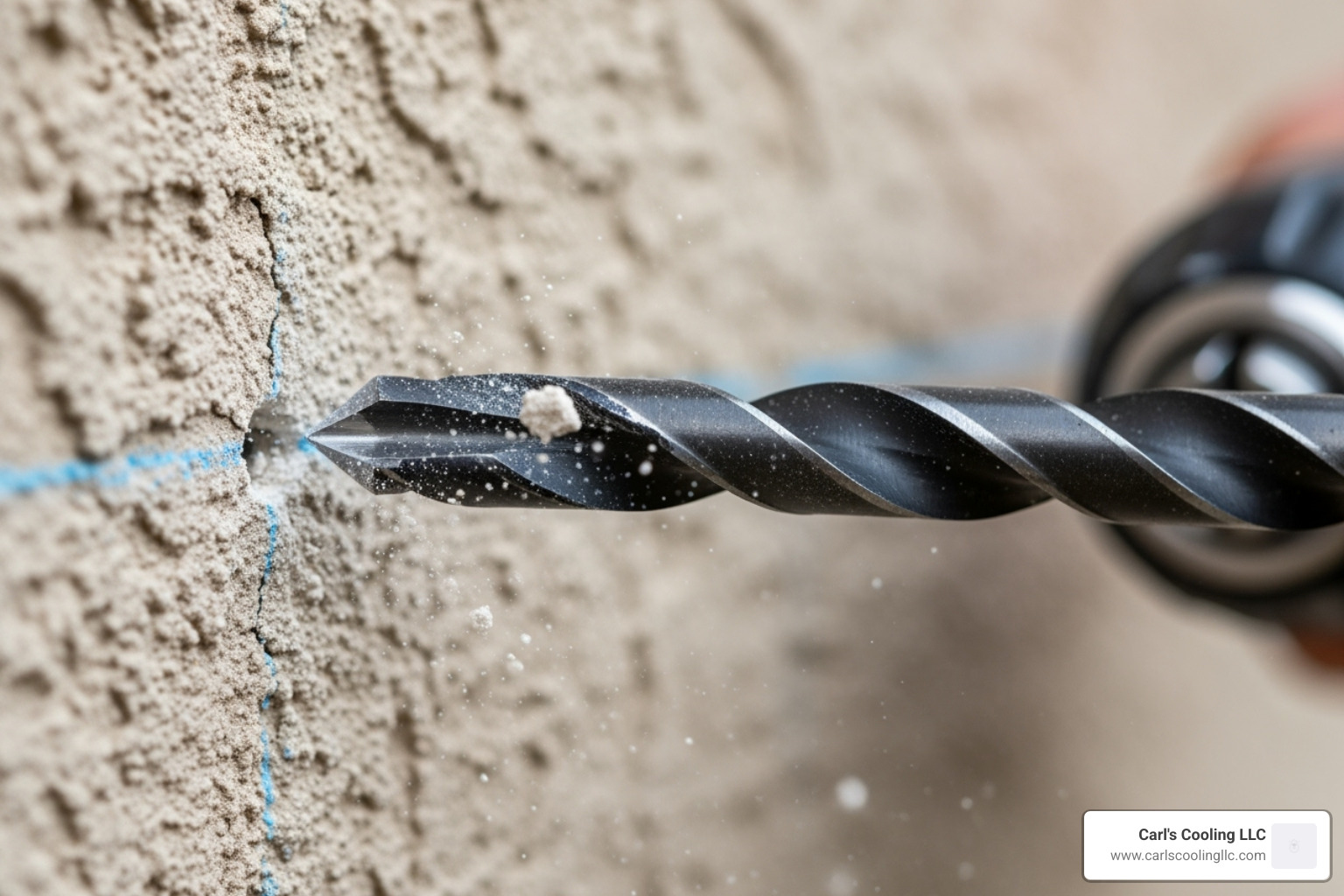
- Run the Line Set: Carefully feed the refrigerant lines, wiring, and condensate drain line through the hole.
- Install the Outdoor Condenser: Place the outdoor unit on its pad or bracket, ensuring proper clearance for airflow.
- Connect Refrigerant Lines: Connect the copper lines between the units. This critical step requires proper flaring and torquing to prevent leaks and often requires an EPA-certified technician.
- Connect Electrical Wiring: A licensed electrician must connect the wiring between units and to the dedicated power source.
- Vacuum the Lines (Evacuation): Use a vacuum pump to remove all air and moisture from the lines, a vital step for efficiency and longevity.
- Charge the System (if not pre-charged): If not using pre-charged lines, add the precise amount of refrigerant. This requires specialized tools.
- Test the System: Power on the unit and test all functions to ensure it's operating correctly.
- Seal and Cover: Seal the wall hole and cover the exterior line set for a clean, protected finish.
DIY vs. Professional Ductless AC Installation: Making the Right Choice
You might be wondering if you can tackle this project yourself. The answer is: it depends!
- DIY-Friendly Kits: Some kits with pre-charged lines simplify installation, but they still have limitations.
- Electrical Safety: A licensed electrician is almost always required for the dedicated power line.
- Refrigerant Handling: Any work with refrigerants requires EPA 608 certification to prevent leaks and ensure safety.
- Warranty Considerations: DIY installation may void the manufacturer's warranty.
- Expertise and Efficiency: A pro ensures correct sizing, placement, and installation for maximum efficiency and longevity.
While DIY can save on labor, professional ductless AC installation is recommended for safety, performance, and warranty protection. It's a worthwhile investment.
The Financials: Costs, Rebates, and Long-Term Savings
When considering ductless AC installation, cost is a primary concern. Understanding the factors that influence price will help you make a smart decision. While the upfront cost may be higher than for a window unit, the long-term value from energy savings, rebates, and a 20-year lifespan makes it an attractive investment.
Breaking Down the Cost of Installation
Several key factors influence the final cost of a ductless AC installation:
The number of zones is the biggest cost factor. A single-zone system is the most affordable, while multi-zone systems cost more for each additional indoor unit.
Equipment quality and brand also affect the price. Higher-efficiency models (with higher SEER ratings) cost more upfront but provide greater long-term energy savings.
Installation complexity impacts labor costs. Factors include the distance between units, placement on upper floors, and any required electrical upgrades.
Regional labor costs and the time of year also play a role. Installation may be less expensive during the off-season (spring and fall).
| System Type | Number of Indoor Units | Best For |
|---|---|---|
| Single-Zone | 1 | Individual rooms, additions, small apartments |
| Multi-Zone (2-3) | 2-3 | Small to medium homes, targeted cooling |
| Multi-Zone (4+) | 4 or more | Whole-house cooling, large homes |
The investment covers sophisticated equipment, professional labor, necessary electrical work, and certified refrigerant handling.
Finding Rebates and Tax Credits
Because ductless systems are highly energy-efficient, various programs can help offset the initial cost.
Federal tax credits may be available for qualifying high-efficiency systems. Check current IRS guidelines, as requirements and amounts can change.
Your local utility company may offer rebates. Contact your provider to see what incentives they offer for energy-efficient upgrades.
Manufacturer incentives, such as rebates or special financing, are often available, especially during the off-season. Your HVAC contractor can provide details.
Always look for the ENERGY STAR® label to ensure you get the most energy savings. These certified models often qualify for more rebates and provide the best long-term savings.
The biggest financial benefit comes from lower monthly energy bills. By eliminating duct losses and allowing for zone control, these systems can be up to 30% more efficient than central air, with savings that add up significantly over the system's lifespan.
Post-Installation: Maintenance and Advanced Features
Once your ductless AC installation is complete, regular maintenance is key to ensuring its longevity and performance.

Essential Maintenance for Peak Performance
Ductless systems are relatively low-maintenance. With proper care, they can last up to 20 years, much longer than many conventional AC units.
- Monthly filter cleaning is the most important DIY task. Simply remove the washable filters, rinse them, let them dry, and put them back. This maintains airflow and air quality.
- Keeping your outdoor unit clear is also important. Regularly remove leaves, grass, and other debris from around the unit to ensure proper airflow.
- Coil cleaning helps maintain efficiency. Gently rinse the outdoor coil with a hose (with the power off). The indoor coil is best cleaned by a professional.
- Check the condensate drain periodically to ensure it isn't clogged, which can cause water to leak from the indoor unit.
- Annual professional maintenance is essential. A technician will perform a thorough inspection, cleaning, and checkup to prevent major problems and ensure peak performance.
More Than Just Cooling: Heating and Smart Technology
Modern ductless systems offer more than just cooling. They are designed to adapt to your lifestyle, offering everything from simple cooling to a fully integrated smart home experience.
Heat pump functionality allows the system to provide highly efficient heating in the winter by reversing its operation. It can extract heat from cold outdoor air, using far less energy than traditional electric heat.
Smart home integration is a common feature. Wi-Fi connectivity allows you to control your system from a smartphone, set schedules, and save energy. Some models even learn your habits.
Advanced air filtration improves indoor air quality. Multi-stage filters can capture allergens, odors, and microscopic particles. This is a significant benefit for those with allergies or respiratory issues.
Frequently Asked Questions about Ductless Systems
We get a lot of questions about ductless AC installation and how these systems work. Let's tackle the most common ones.
How long does a ductless mini-split system last?
A well-maintained ductless system can last up to 20 years, significantly longer than the 10-15 year lifespan of many traditional AC units. The key to longevity is regular maintenance, including monthly filter cleanings and annual professional tune-ups.
Can one ductless unit cool an entire house?
While a single indoor unit cools a specific zone, a multi-zone system can cool an entire house by connecting multiple indoor units to a single outdoor unit. Depending on your home's layout, you may not need a unit in every room. An installer will assess your home's layout, insulation, and usage patterns to design the most efficient configuration for your ductless AC installation.
How much does it cost to run a ductless AC?
Ductless systems are highly efficient, which leads to lower monthly energy bills for several reasons:
- They eliminate ductwork, where over 30% of energy can be lost in traditional systems.
- Zone-specific cooling allows you to cool only the rooms you are using, saving energy.
- Inverter-driven compressors adjust their speed to match cooling demand, running more efficiently than traditional on/off systems.
As a result, homeowners typically enjoy lower monthly energy bills compared to central air, with savings that help offset the initial investment.
Conclusion
Ductless AC installation is a popular choice for its unique blend of flexibility, efficiency, and personalized comfort. You get zone-specific cooling, no energy waste from leaky ducts, and whisper-quiet operation. The installation is less disruptive than traditional ductwork and adapts to your needs, whether for a single room or a whole house.
While there is an upfront cost, the long-term energy savings, potential rebates, and an impressive 20-year lifespan make it a smart investment in your home's comfort and efficiency.
The beauty of these systems extends beyond just cooling too. With heat pump functionality for year-round comfort and smart technology integration, you're getting a complete climate solution that grows with your needs.
Regular maintenance keeps everything running smoothly, and the advanced air filtration features mean you're not just getting comfortable temperatures - you're breathing cleaner, healthier air too.
For a professional assessment and flawless installation, trust the experts at Carl's Cooling LLC to get the job done right. We understand that every home is unique, and we're here to help you find the perfect ductless solution for your space and budget.
Ready to experience the comfort and efficiency of a ductless system? Get a free consultation for your ductless AC installation today! Let's make your home the comfortable haven it should be.

